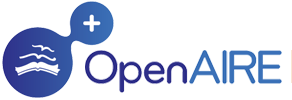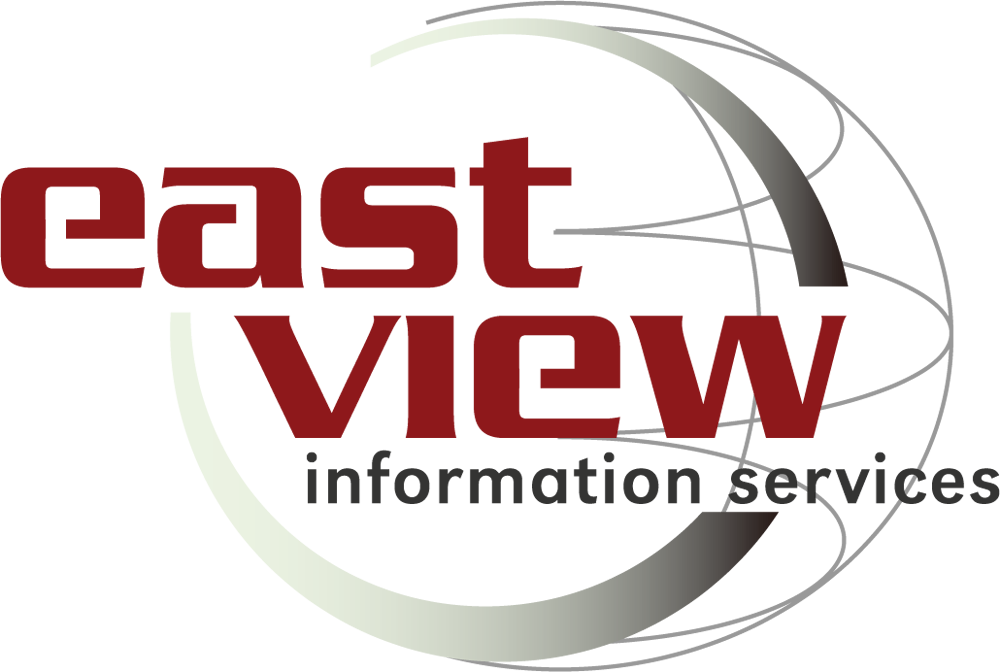КЛИНИЧЕСКОЕ ЗНАЧЕНИЕ ОКСИГЕНОТЕРАПИИ В КОМПЛЕКСНОМ ЛЕЧЕНИИ ЗАБОЛЕВАНИЙ РАЗНОЙ НОЗОЛОГИИ В ХИРУРГИЧЕСКОЙ И ТЕРАПЕВТИЧЕСКОЙ ПРАКТИКЕ, В ЧАСТНОСТИ COVID-19

Аннотация
Актуальность проведенного обзора обусловлена ролью оксигенотерапии как одного из наиболее важных методов лечения пациентов с разными патологиями дыхательной системы. Цель. Провести анализ литературы по клиническому значению медицинского кислорода, а также роли оксигенотерапии при пандемии COVID-19. Материал и методы. Проанализировано 45 литературных источников. Результаты. Получены сведения о важной роли кислородотерапии в лечении заболеваний разной нозологии как в хирургической практике, так и в терапевтической, особенно в период пандемии COVID-19. Выводы. На основе клинических наблюдений установлено значимое влияние оксигенотерапии как компонента комплексной терапии у пациентов с разными патологиями дыхательной системы и респираторной недостаточностью.
Литература
World Health Organization. The selection and use of essential medicines: report of the WHO Expert Committee, 2017 (including the 20th WHO model list of essential medicines and the 6th WHO Model list of essential medicines for children) [Internet]. Geneva; 2017. (WHO technical report series; no. 1006). Available from: https://apps.who.int/iris/handle/10665/259481.
Vincent JL, Akça S, De Mendonça A, Haji-Michael P, Sprung C, Moreno R, Antonelli M, Suter PM. The epidemiology of acute respiratory failure in critically ill patients. Chest. 2002;121(5):1602-9. https://doi.org/10.1378/chest.121.5.1602.
Brugniaux JV, Coombs GB, Barak OF, Dujic Z, Sekhon MS, Ainslie PN. Highs and lows of hyperoxia: physiological, performance, and clinical aspects. Am J Physiol Regul Integr Comp Physiol. 2018;315(1):1-27. https://doi.org/10.1152/ajpregu.00165.2017.
Davies KJ. Oxidative stress: the paradox of aerobic life. Biochem Soc Symp. 1995;61:1-31. https://doi.org/10.1042/bss0610001.
Sutherland T, Musafiri S, Twagirumugabe T, Talmor D, Riviello ED. Oxygen as an Essential Medicine: Underand Over-Treatment of Hypoxemia in Low- and HighIncome Nations. Crit Care Med. 2016;44(10):1015-6. https://doi.org/10.1097/CCM.0000000000001912.
Continuous or nocturnal oxygen therapy in hypoxemic chronic obstructive lung disease: a clinical trial. Nocturnal Oxygen Therapy Trial Group. Ann Intern Med. 1980;93(3):391-8. https://doi.org/10.7326/0003-4819-93-3-391.
O’Driscoll BR, Howard LS, Earis J, Mak V. BTS guideline for oxygen use in adults in healthcare and emergency settings. Thorax. 2017;72(Suppl 1):ii1-ii90. https://doi.org/10.1136/thoraxjnl-2016-209729.
Weaver LK. Clinical practice. Carbon monoxide poisoning. N Engl J Med. 2009;360(12):1217-25. https://doi.org/10.1056/NEJMcp0808891.
Beynon C, Kiening KL, Orakcioglu B, Unterberg AW, Sakowitz OW. Brain tissue oxygen monitoring and hyperoxic treatment in patients with traumatic brain injury. J Neurotrauma. 2012;29(12):2109-23. https://doi.org/10.1089/neu.2012.2365.
Menon DK, Coles JP, Gupta AK, Fryer TD, Smielewski P, Chatfield DA, Aigbirhio F, Skepper JN, Minhas PS, Hutchinson PJ, Carpenter TA, Clark JC, Pickard JD. Diffusion limited oxygen delivery following head injury. Crit Care Med. 2004;32(6):1384-90. https://doi.org/10.1097/01.ccm.0000127777.
Tal S, Hadanny A, Berkovitz N, Sasson E, Ben-Jacob E, Efrati S. Hyperbaric oxygen may induce angiogenesis in patients suffering from prolonged post-concussion syndrome due to traumatic brain injury. Restor Neurol Neurosci. 2015;33(6):943-51. https://doi.org/10.3233/RNN-150585.
Stoekenbroek RM, Santema TB, Legemate DA, Ubbink DT, van den Brink A, Koelemay MJ. Hyperbaric oxygen for the treatment of diabetic foot ulcers: a systematic review. Eur J Vasc Endovasc Surg. 2014;47(6):647-55. https://doi.org/10.1016/j.ejvs.2014.03.005.
García de la Asunción J, Belda FJ, Greif R, Barber G, Viña J, Sastre J. Inspired supplemental oxygen reduces markers of oxidative stress during elective colon surgery. Br J Surg. 2007;94(4):475-7. https://doi.org/10.1002/bjs.5497.
Bennett MH, French C, Schnabel A, Wasiak J, Kranke P, Weibel S. Normobaric and hyperbaric oxygen therapy for the treatment and prevention of migraine and cluster headache. Cochrane Database Syst Rev. 2015 (12):CD005219. https://doi.org/10.1002/14651858.CD005219.pub3.
Al-Qorain A, Adu-Gyamfi Y, Larbi EB, Al-Shedokhi F. The Effect of Supplemental Oxygen in Sedated and Unsedated Patients Undergoing Upper Gastrointestinal Endoscopy. J Int Med Res. 1993;21(4):165-170. https://doi.org/10.1177/030006059302100401.
Crantock L, Cowen AE, Ward M, Roberts RK. Supplemental low flow oxygen prevents hypoxia during endoscopic cholangiopancreatography. Gastrointest Endosc. 1992;38(4):418-20. https://doi.org/10.1016/s0016-5107(92)70468-4.
Mart MF, Sendagire C, Ely EW, Riviello ED, Twagirumugabe T. Oxygen as an Essential Medicine. Crit Care Clin. 2022;38(4):795-808. https://doi.org/10.1016/j.ccc.2022.06.010.
Davies RJ, Hopkin JM. Variability of inspired oxygen concentration with nasal cannulas. Thorax. 1992;47(12):1086. https://doi.org/10.1136/thx.47.12.1086.
Kallstrom TJ. AARC Clinical Practice Guideline: oxygen therapy for adults in the acute care facility-2002 revision &update. Respir Care. 2002;47(6):717-20.
Bateman NT, Leach RM. ABC of oxygen. Acute oxygen therapy. BMJ. 1998;317(7161):798-801. https://doi.org/10.1136/bmj.317.7161.798.
Helviz Y, Einav S. A Systematic Review of the High-flow Nasal Cannula for Adult Patients. Crit Care. 2018;22(1):71. https://doi.org/10.1186/s13054-018-1990-4.
Rochwerg B, Granton D, Wang DX, Helviz Y, Einav S, Frat JP, Mekontso-Dessap A, Schreiber A, Azoulay E, Mercat A, Demoule A, Lemiale V, Pesenti A, Riviello ED, Mauri T, Mancebo J, Brochard L, Burns K. High flow nasal cannula compared with conventional oxygen therapy for acute hypoxemic respiratory failure: a systematic review and meta-analysis. Intensive Care Med. 2019;45(5):563-572. https://doi.org/10.1007/s00134-019-05590-5.
Frat JP, Thille AW, Mercat A, Girault C, Ragot S, Perbet S, Prat G, Boulain T, Morawiec E, Cottereau A, Devaquet J, Nseir S, Razazi K, Mira JP, Argaud L, Chakarian JC, Ricard JD, Wittebole X, Chevalier S, Herbland A, Fartoukh M, Constantin JM, Tonnelier JM, Pierrot M, Mathonnet A, et al. High-flow oxygen through nasal cannula in acute hypoxemic respiratory failure. N Engl J Med. 2015;372(23):2185-96. https://doi.org/10.1056/NEJMoa1503326.
Hernández G, Vaquero C, Colinas L, Cuena R, González P, Canabal A, Sanchez S, Rodriguez ML, Villasclaras A, Fernández R. Effect of Postextubation High-Flow Nasal Cannula vs Noninvasive Ventilation on Reintubation and Postextubation Respiratory Failure in High-Risk Patients: A Randomized Clinical Trial. JAMA. 2016;316(15):1565-1574. https://doi.org/10.1001/jama.2016.14194.
MacIntyre N, Rackley C, Khusid F. Fifty Years of Mechanical Ventilation-1970s to 2020. Crit Care Med. 2021;49(4):558-574. https://doi.org/10.1097/CCM.0000000000004894.
Usher AD. Medical oxygen crisis: a belated COVID-19 response. Lancet. 2021;397(10277):868-869. https://doi.org/10.1016/S0140-6736(21)00561-4.
Skrip L, Derra K, Kaboré M, Noori N, Gansané A, Valéa I, Tinto H, Brice BW, Gordon MV, Hagedorn B, Hien H, Althouse BM, Wenger EA, Ouédraogo AL. Clinical management and mortality among COVID-19 cases in sub-Saharan Africa: A retrospective study from Burkina Faso and simulated case analysis. Int J Infect Dis. 2020;101:194-200. https://doi.org/10.1016/j.ijid.2020.09.1432.
PATH. COVID-19 oxygen needs tracker [Internet]. Available from: https://www.path.org/programs/market-dynamics/covid-19-oxygen-needs-tracker/.
World Health Organization. The access to COVID-19 tools (ACT) accelerator [Internet]. Available from: https://www.who.int/initiatives/act-accelerator.
Unitaid; Every Breath Counts. The ACT-A Oxygen Emergency Taskforce...one year on [Internet]. Statement 23 Feb. 2022. Available from: https://stoppneumonia.org/wp-content/uploads/2022/02/ACTAOxygenTaskforceAnniversaryStatement23February2022.pdf.
Richards MJ, Edwards JR, Culver DH, Gaynes RP. Nosocomial infections in medical intensive care units in the United States. National Nosocomial Infections Surveillance System. Crit Care Med. 1999;27(5):887-92. https://doi.org/10.1097/00003246-199905000-00020.
Kappstein I, Schulgen G, Beyer U, Geiger K, Schumacher M, Daschner FD. Prolongation of hospital stay and extra costs due to ventilator-associated pneumonia in an intensive care unit. Eur J Clin Microbiol Infect Dis. 1992;11(6):504-8. https://doi.org/10.1007/BF01960804.
Papazian L, Bregeon F, Thirion X, Gregoire R, Saux P, Denis JP, Perin G, Charrel J, Dumon JF, Affray JP, Gouin F. Effect of ventilator-associated pneumonia on mortality and morbidity. Am J Respir Crit Care Med. 1996;154(1):91-7. https://doi.org/10.1164/ajrccm.154.1.8680705.
Avdeev SN, Adamjan LV, Alekseeva EI, Bagnenko SF, Baranov AA, Baranova NN, Belevskij AS, Belkin AA, Beloborodov VB, Bodrova RA, Bujlova TV, Bojko EA, Briko NI, Brusina EB, Vavilova TV, Vajsman DSh, Vasileva EJu, Vasileva IA, Vasileva NV, Veselova EI, Vishneva EA, Volchkova EV, Volchenkov GV, Gaponova TV, Godkov MA, i dr. Profilaktika, diagnostika i lechenie novoj koronavirusnoj infekcii (COVID-19) [Internet]. Available from: http://edu.rosminzdrav.ru/fileadmin/user_upload/specialists/COVID-19/MR_COVID-19_v7.pdf (Russian).
Jiang LG, LeBaron J, Bodnar D, Caputo ND, Chang BP, Chiricolo G, Flores S, Kenny J, Melville L, Sayan OR, Sharma M, Shemesh A, Suh E, Farmer B. Conscious Proning: An Introduction of a Proning Protocol for Nonintubated, Awake, Hypoxic Emergency Department COVID-19 Patients. Acad Emerg Med. 2020;27(7):566-569. https://doi.org/10.1111/acem.14035.
Ehrmann S, Li J, Ibarra-Estrada M, Perez Y, Pavlov I, McNicholas B, Roca O, Mirza S, Vines D, Garcia-Salcido R, Aguirre-Avalos G, Trump MW, Nay MA, Dellamonica J, Nseir S, Mogri I, Cosgrave D, Jayaraman D, Masclans JR, Laffey JG, Tavernier E. Awake prone positioning for COVID-19 acute hypoxaemic respiratory failure: a randomised, controlled, multinational, open-label meta-trial. Lancet Respir Med. 2021;9(12):1387-1395. https://doi.org/10.1016/S2213-2600(21)00356-8.
Patel M, Gangemi A, Marron R, Chowdhury J, Yousef I, Zheng M, Mills N, Tragesser L, Giurintano J, Gupta R, Gordon M, Rali P, D’Alonso G, Fleece D, Zhao H, Patlakh N, Criner G. Retrospective analysis of high flow nasal therapy in COVID-19-related moderate-to-severe hypoxaemic respiratory failure. BMJ Open Respir Res. 2020;7(1):e000650. https://doi.org/10.1136/bmjresp-2020-000650.
Ferrando C, Mellado-Artigas R, Gea A, Arruti E, Aldecoa C, Adalia R, Ramasco F, Monedero P, Maseda E, Tamayo G, Hernández-Sanz ML, Mercadal J, Martín-Grande A, Kacmarek RM, Villar J, Suárez-Sipmann F. Awake prone positioning does not reduce the risk of intubation in COVID-19 treated with high-flow nasal oxygen therapy: a multicenter, adjusted cohort study. Crit Care. 2020;24(1):597. https://doi.org/10.1186/s13054-020-03314-6.
Brusasco C, Corradi F, Di Domenico A, Raggi F, Timossi G, Santori G, Brusasco V. Continuous positive airway pressure in COVID-19 patients with moderate-to-severe respiratory failure. Eur Respir J. 2021;57(2):2002524. https://doi.org/10.1183/13993003.02524-2020.
Bradley P, Wilson J, Taylor R, Nixon J, Redfern J, Whittemore P, Gaddah M, Kavuri K, Haley A, Denny P, Withers C, Robey RC, Logue C, Dahanayake N, Min DSH, Coles J, Deshmukh MS, Ritchie S, Malik M, Abdelaal H, Sivabalah K, Hartshorne MD, Gopikrishna D, Ashish A, Nuttall E, et al. Conventional oxygen therapy versus CPAP as a ceiling of care in ward-based patients with COVID-19: a multi-centre cohort evaluation. EClinicalMedicine. 2021;40:101122. https://doi.org/10.1016/j.eclinm.2021.101122.
Perkins GD, Ji C, Connolly BA, Couper K, Lall R, Baillie JK, Bradley JM, Dark P, Dave C, De Soyza A, Dennis AV, Devrell A, Fairbairn S, Ghani H, Gorman EA, Green CA, Hart N, Hee SW, Kimbley Z, Madathil S, McGowan N, Messer B, Naisbitt J, Norman C, Parekh D, et al. Effect of Noninvasive Respiratory Strategies on Intubation or Mortality Among Patients With Acute Hypoxemic Respiratory Failure and COVID-19: The RECOVERY-RS Randomized Clinical Trial. JAMA. 2022;327(6):546-558. https://doi.org/10.1001/jama.2022.0028.
Cronin JN, Camporota L, Formenti F. Mechanical ventilation in COVID-19: A physiological perspective. Exp Physiol. 2022;107(7):683-693. https://doi.org/10.1113/EP089400.
Richardson S, Hirsch JS, Narasimhan M, Crawford JM, McGinn T, Davidson KW, Barnaby DP, Becker LB, Chelico JD, Cohen SL, Cookingham J, Coppa K, Diefenbach MA, Dominello AJ, Duer-Hefele J, Falzon L, Gitlin J, Hajizadeh N, Harvin TG, Hirschwerk DA, Kim EJ, Kozel ZM, Marrast LM, Mogavero JN, Osorio GA, et al. Presenting Characteristics, Comorbidities, and Outcomes Among 5700 Patients Hospitalized With COVID-19 in the New York City Area. JAMA. 2020;323(20):2052-2059. https://doi.org/10.1001/jama.2020.6775.
Kim JH, Pieri M, Landoni G, Scandroglio AM, Calabrò MG, Fominskiy E, Lembo R, Heo MH, Zangrillo A. Venovenous ECMO treatment, outcomes, and complications in adults according to large case series: A systematic review. Int J Artif Organs. 2021;44(7):481-488. https://doi.org/10.1177/0391398820975408.
Bertini P, Guarracino F, Falcone M, Nardelli P, Landoni G, Nocci M, Paternoster G. ECMO in COVID-19 Patients: A Systematic Review and Meta-analysis. J Cardiothorac Vasc Anesth. 2022;36(8Pt A):2700-2706. https://doi.org/10.1053/j.jvca.2021.11.006.




























